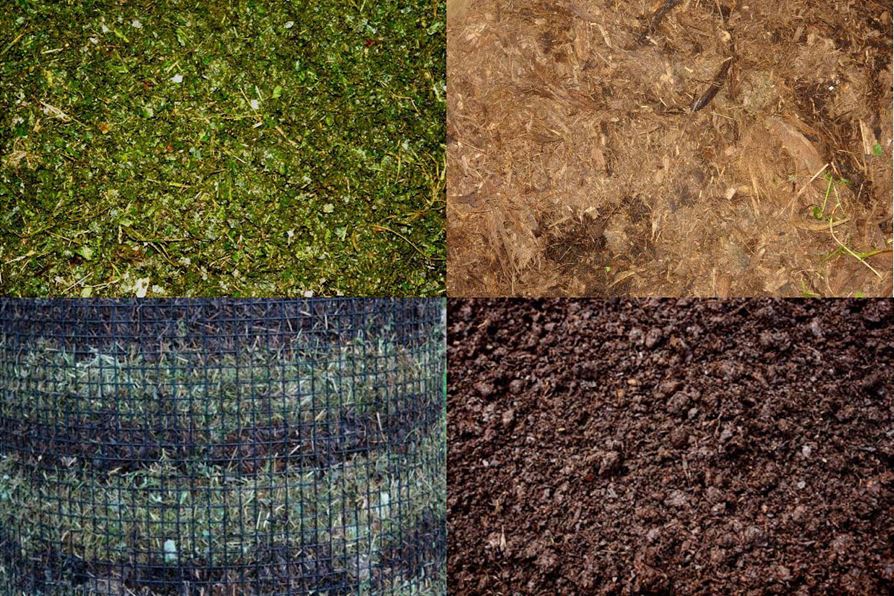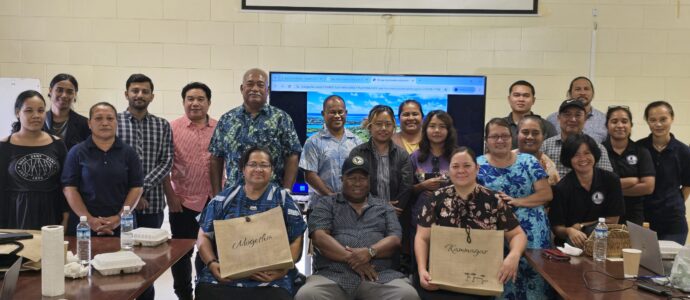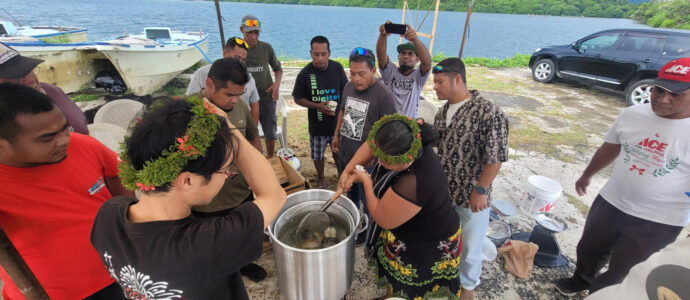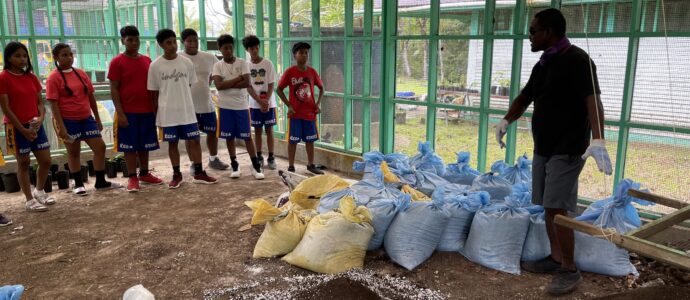KOSRAE, FSM. Dr. Virendra M. Verma, Researcher/Extension Specialist, Kosrae Agricultural Experiment Station.
Organic matters such as crop residues and animal manure were used for composting. Solid swine manure was separated from the piggery effluent by using a rundown screen and sun dried for two weeks. Dried solid manure was shredded along with the dried organic materials such as crop residues, and was used as brown material (carbon rich) for composting. All fresh and green organic materials were shredded while still fresh and were used as green material (nitrogen rich) for composting. Hot composting technique was implemented to convert the nutrient-rich crop residues and swine manure into valuable compost at the Kosrae Agricultural Experiment Station. A six inch layer at the bottom of the compost pile was filled with coconut husk for better air circulation. Green and brown materials were layered alternately and on each layer a half inch thick layer of finished compost, and fresh and healthy soil from the forest was added as an activator. Aerobic process was used for decomposition of organic matters. High microbial activities generated heat that was regulated and maintained within the required range of 140-158oF in the composting pile by appropriate air circulation and proper moisture maintenance during heating phase. The pile was turned once in a week and treated effluent from the piggery was sprayed to control and maintain appropriate temperature and moisture, respectively. The heating phase gradually changed into a cooling phase and decomposition occurred without much generation of heat, and temperature dropped slowly up to 86oF. At the end of decomposition, during the maturation phase, the temperature dropped 68-77oF and resulted in finished compost. This ecologically integrated and well managed system composted the crop residues, manure and spilled feed in less than 3 months.






